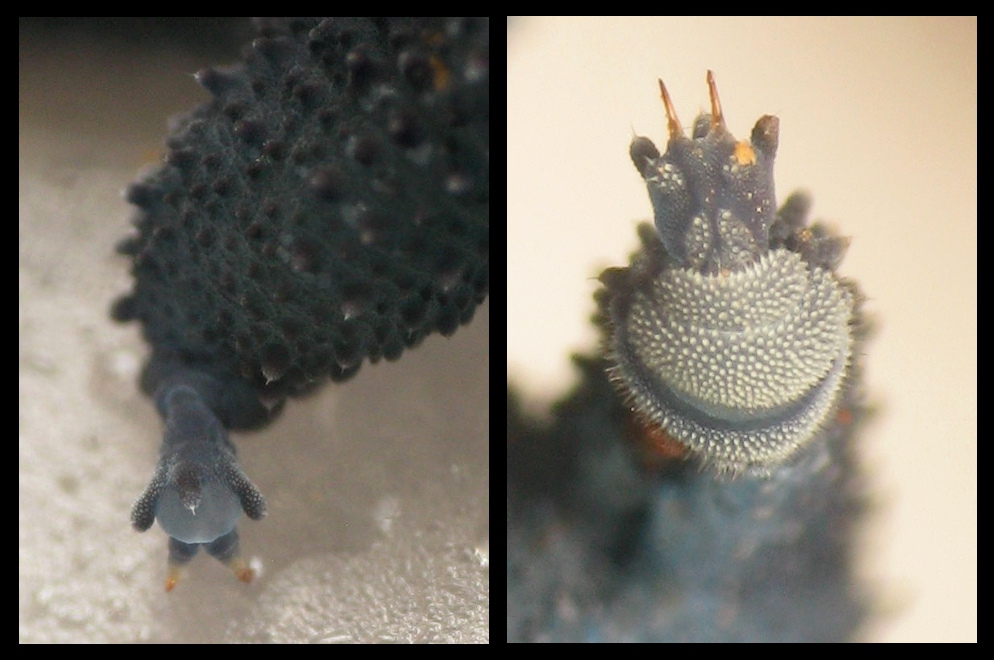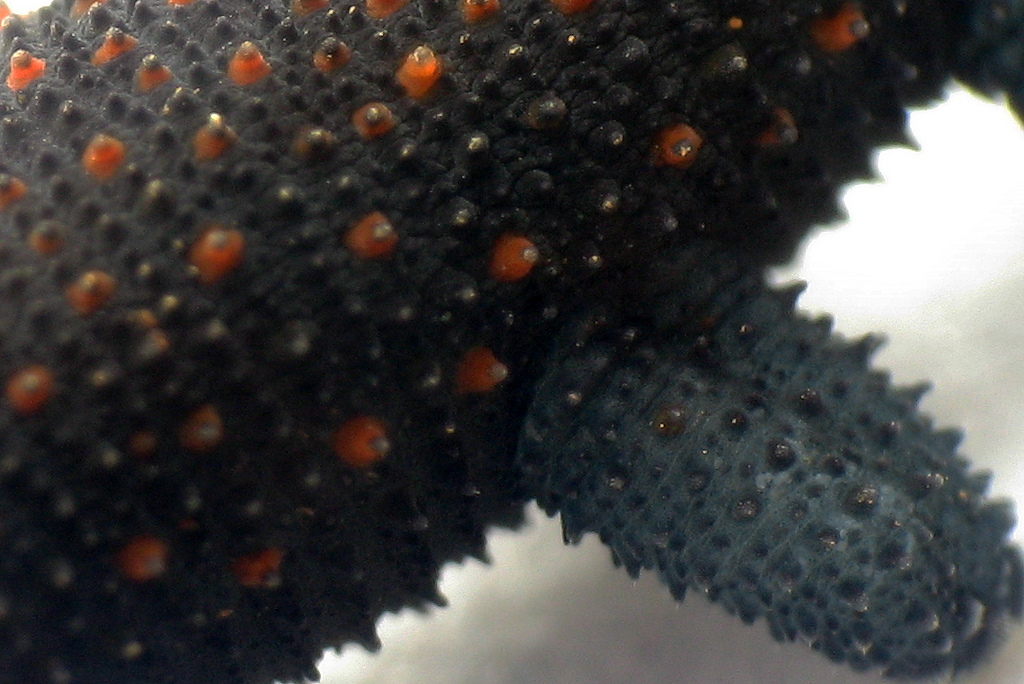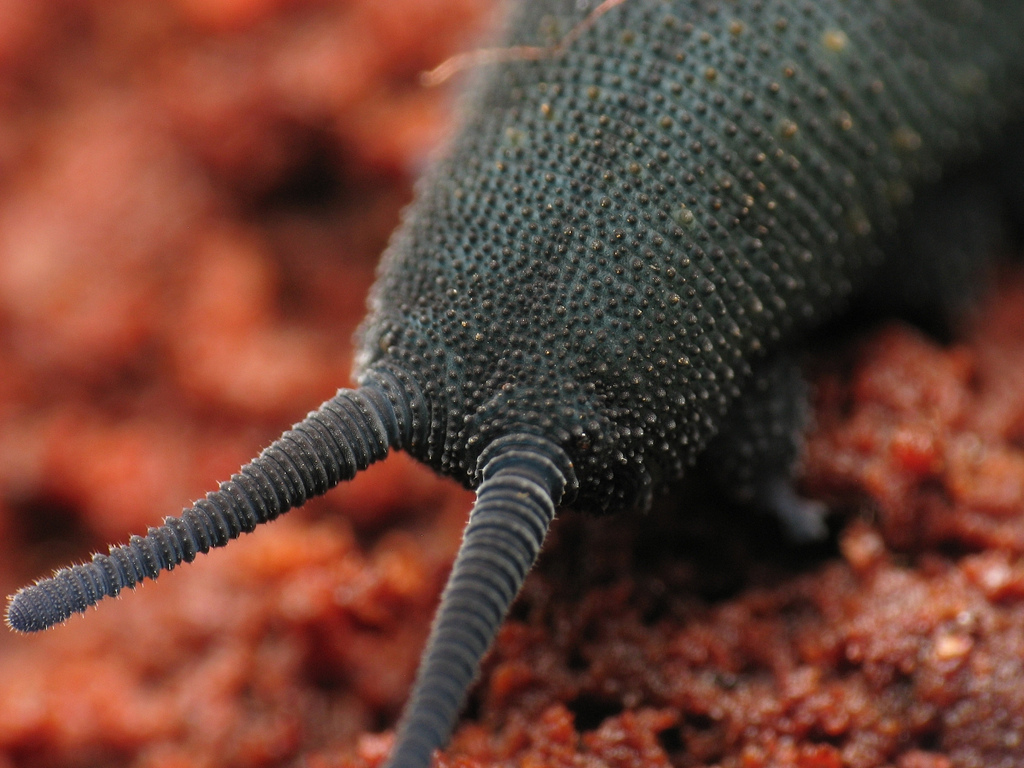Adaptation
Although Euperipatoides rowelli appears to be an annelid worm it actually has between 14 and 16 legs which it uses to walk along the ground. E. rowelli gets the classification Onychophora because of the little claws on the ends of its legs which it only uses when the terrain is rough to maintain its balance and grip while walking (Glime 2013). Each pair of legs moves simultaneously with non-overlapping steps thus allowing them to be a stealthy predator. The pore-like tracheae in the skin (pictured below) bring oxygen into E. rowelli's open circulatory system. This system uses a tube shaped heart and blood which does not carry oxygen, thus the need for a tracheal breathing system.. However, like a stoma, trachea can also cause major water loss which is why E. rowelli must live in such a moist habitat.
Pictured above: To the left is a close up
the specialized claw of E. Rowelli,
and to the right is a closer view of the leg and trachea in its
skin.
Because Euperipatoides rowelli is a fierce predator of the night, yet small and soft bodied, it needs a special adaptation to allow it to take down its prey. In order to do this it has a special oral papillae or two small appendages on the sides of its mouth (Eriksson et al. 2003). The oral papilla allows E. rowelli to shoot white sticky glue which immobilizes its prey. E. rowelli will also shoot glue through its oral papillae as a form of defense against predators (Harito et al. 2010). E. rowelli also has mandibles which allow it to bite through the hard exoskeleton of its prey such as the Cicada (Tibicien pruinosa) (Tasmania 2012). These include termites (Isoptera), large snails (Gastropoda), and bark lice (Psocoptera) which are not to be confused with Human lice (Pediculus humanus). Other neighboring fauna to E. rowelli in Australia include Phascolarctos cinereus (Koala bear) and the much smaller Acrobates pygmaeus (Feathertail glider). For more information on how E. rowelli captures its prey click on the Interactions link provided.
Pictured above: Left is a dorsal view of E. rowelli and on the right is a close up of an E. rowelli antennae which it uses to sense and see its surroundings.
To continue your research check out the Reproduction page!
For further information on references used follow the link provided.



